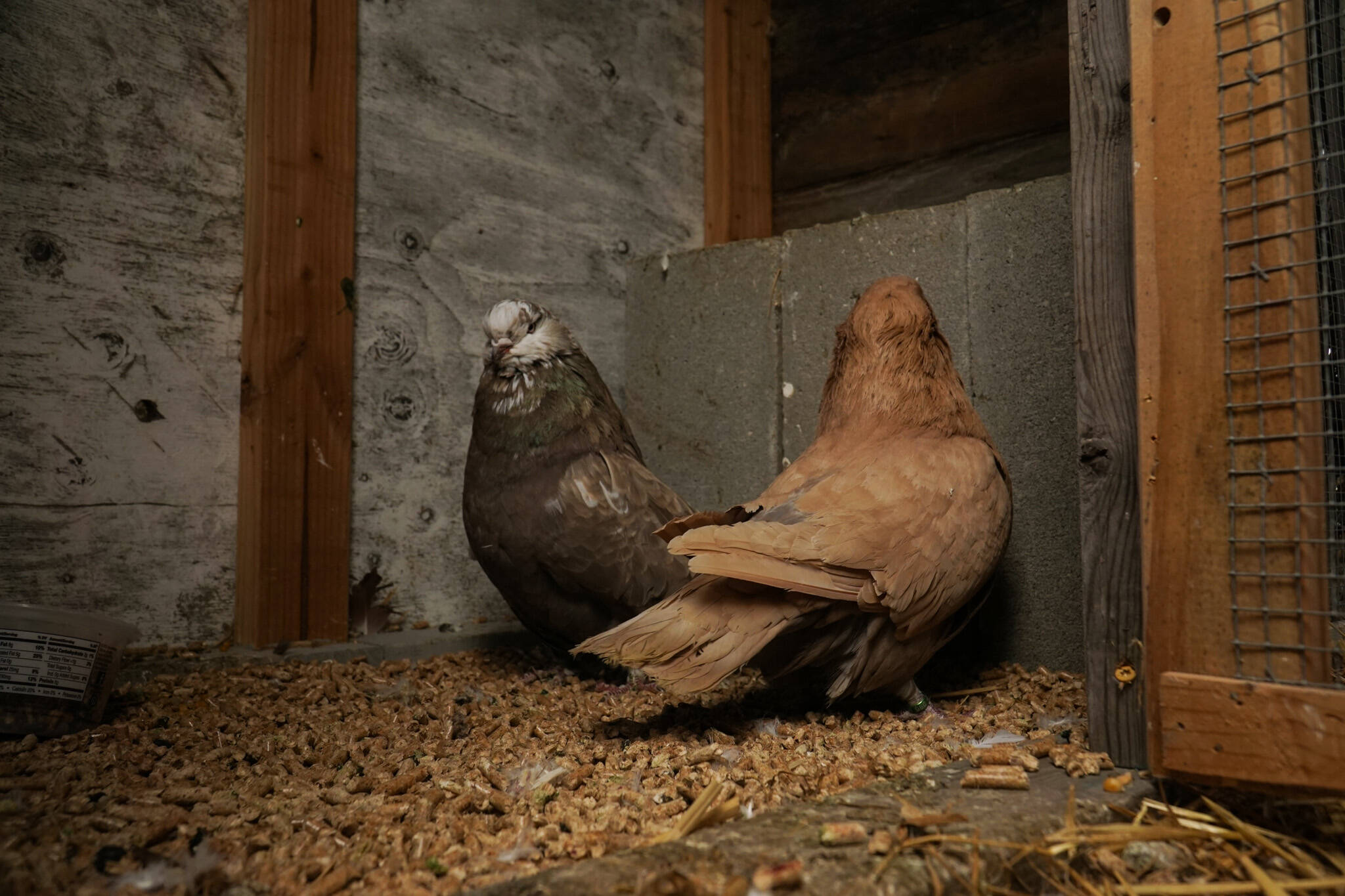Oak Harbor resident Laurie Monical has mothered wolves, arctic foxes, prairie dogs, parakeets and more. Her latest passion is the oldest and largest domestic pigeon breed in the world.
Three large coops stand in her backyard, housing what some breeders call giant runts. Monical calls them her kids.
From these enclosures come soft, subdued coos, which warm Monical as she approaches. It’s not the obnoxious crow of a rooster, she said. The culprits are couples Adora and Finnegan, Athena and Hannibal and a third pair she just received on Thursday. One of which she already named Kahlua.
At 71 years old, Monical hand-built their enclosures.
“I just take two pain pills, grab my cane and get after it, because it won’t be done by itself,” she said.
As she approaches the newest pair, the cooing amplifies.
“That’s the male talking,” Monical said. “It’s basically, ‘hey baby.’”
Giant runts originate in Italy, possibly during the time of Ancient Rome. Historians have traced the breed back to references by the Roman writer, Pliny the Elder, in the first century. Some believe giant runts are depicted on the interior columns of St. Peter’s Basilica at the Vatican.
“Giant runt” sounds like an oxymoron, but it comes from an older slang version of the word “runt,” meaning common or plain, Monical said.
They were originally bred for food, having large, chicken-like breasts.
“I haven’t eaten meat in 50 years,” Monical said, “so they’re safe with me.”
Like chickens, too, they’re waddlers, only able to fly short distances. They come in coal black to snow white and everything in between. Some are yellow, some are red and some are “turtle-shelled,” meaning three or more colors.
Now, giant runts are mostly bred for their beauty as show birds. But Monical doesn’t do that either. In any local pigeon show, she’d have the only giant runts and would win without competition, she said.
She does breed them and sell their offspring, but this doesn’t take much, she said. Once she pairs them up, it’s a matter of time and fair weather.
But they make lousy parents, Monical said, often crushing their own eggs.
Monical has a pair of king pigeons, called utility birds, who raise the offspring of the giant runts. Kings are almost as big as giant runts, but not as clumsy.
Once they’re raised, she sells them. After the most recent pair, she’s at capacity. They eat and poop like horses, she said, and molting pigeons create snowstorms.
But as far as kids go, they’re pretty good at that, she said.
“I just love the birds because it gets me up and out of the bed and dressed,” she said.
Monical’s first pair of pigeons came as a Christmas gift from her late husband. With their soft coos and playful personalities, she cherishes their companionship, she said.


